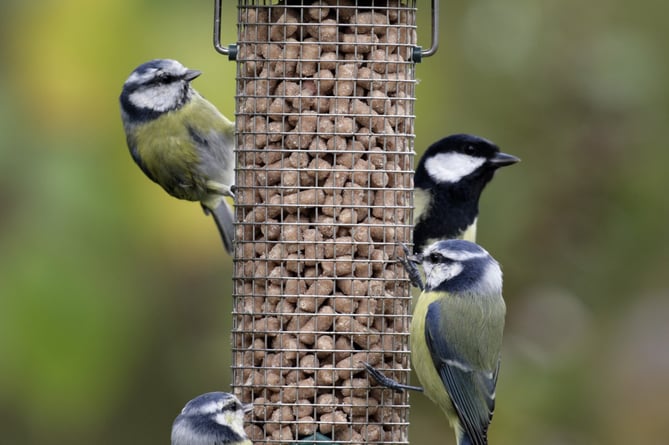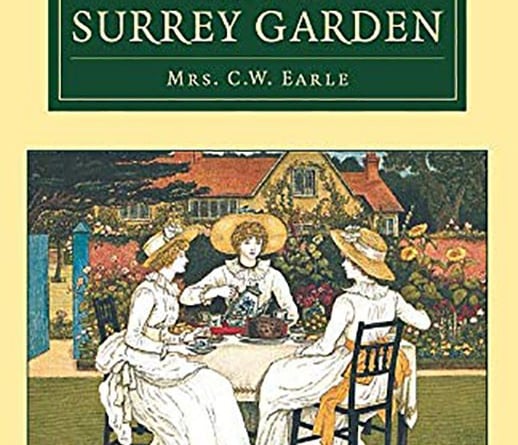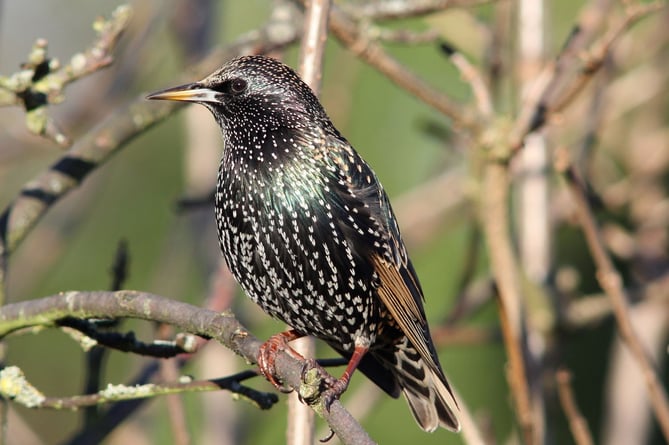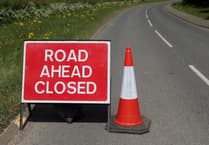Were you one of more than 600,000 people who took part in this year’s RSPB Big Garden Birdwatch?
The RSPB has just announced its headline results: the house sparrow has held on to the top spot as the bird seen most often in gardens nationally, with the blue tit at number two and starling in third place. Woodpigeon and blackbird make up the remainder of the top five most recorded species.
It will be interesting to see the regional results when they are revealed, for in previous years the blue tit was the bird most often seen in Surrey, followed by the woodpigeon and house sparrow.

The annual count every January is the world’s largest garden wildlife survey and reveals the importance of the nation’s gardens for wildlife and what we can do to help. It gives the RSPB insights into how some of our most common garden birds are faring.
The starling is an interesting case. Numbers increase dramatically during the winter months when birds arrive from northern Europe, just in time for the Big Garden Birdwatch. But despite coming in at number three in this year’s survey nationally, the RSPB says the starling is on the UK Red List of most threatened species due to a sharp decline since the 1960s in its breeding population.
The RSPB says that gardens remain an important refuge for starlings and even small actions can benefit starlings and other birds, as well as other garden wildlife.

Beccy Speight of the RSPB said: “Last year’s State of Nature report laid out a grim picture, finding that there’s been no let-up in the decline of our wildlife over recent decades, with one in six species at risk of being lost from Great Britain.
‘’However, with seven out of eight households lucky enough to have access to a garden, it is the place where many of us can make a positive difference. Gardens and community green spaces can both give a crucial lifeline for struggling species by providing a huge patchwork of potential homes for nature.
“Gardens provide the perfect place for us as individuals to start: providing food, shelter and water for wildlife, not using chemicals and not using peat-based compost. What we do in our own backyard can make a huge difference. All of us making small changes can effect huge change.”
National Gardening Week
National Gardening Week runs from next Monday, April 29 until Sunday, May 5 – the country’s biggest annual celebration of everything garden-focused.
Surrey has been home to many inspirational gardeners and horticulturalists, across the centuries. Arguably the most famous is Gertrude Jekyll, who designed 400 gardens in Britain, Europe and North America, but was also a talented needlewoman, photographer and supporter of votes for women.
Surrey History Centre in Woking and Godalming Museum each hold important collections relating to Jekyll’s work and family: Surrey History Centre has posted a fascinating page about her life and career in its Exploring Surrey’s Past series: visit https://tinyurl.com/gjekyll
Other pages about fascinating Surrey gardeners are also available in the series: the Hon. Charles Hamilton, a forerunner of Lancelot “Capability” Brown, created one of the most important 18th-century landscape parks in Europe at Painshill: see https://tinyurl.com/ham-painshill
A Surrey writer, Maria Theresa Earle – better known as Mrs Earle – lived at “Woodlands” in Cobham and her books influenced many subsequent writers on gardening subjects, including Gertrude Jekyll. Visit https://tinyurl.com/mrsearle




